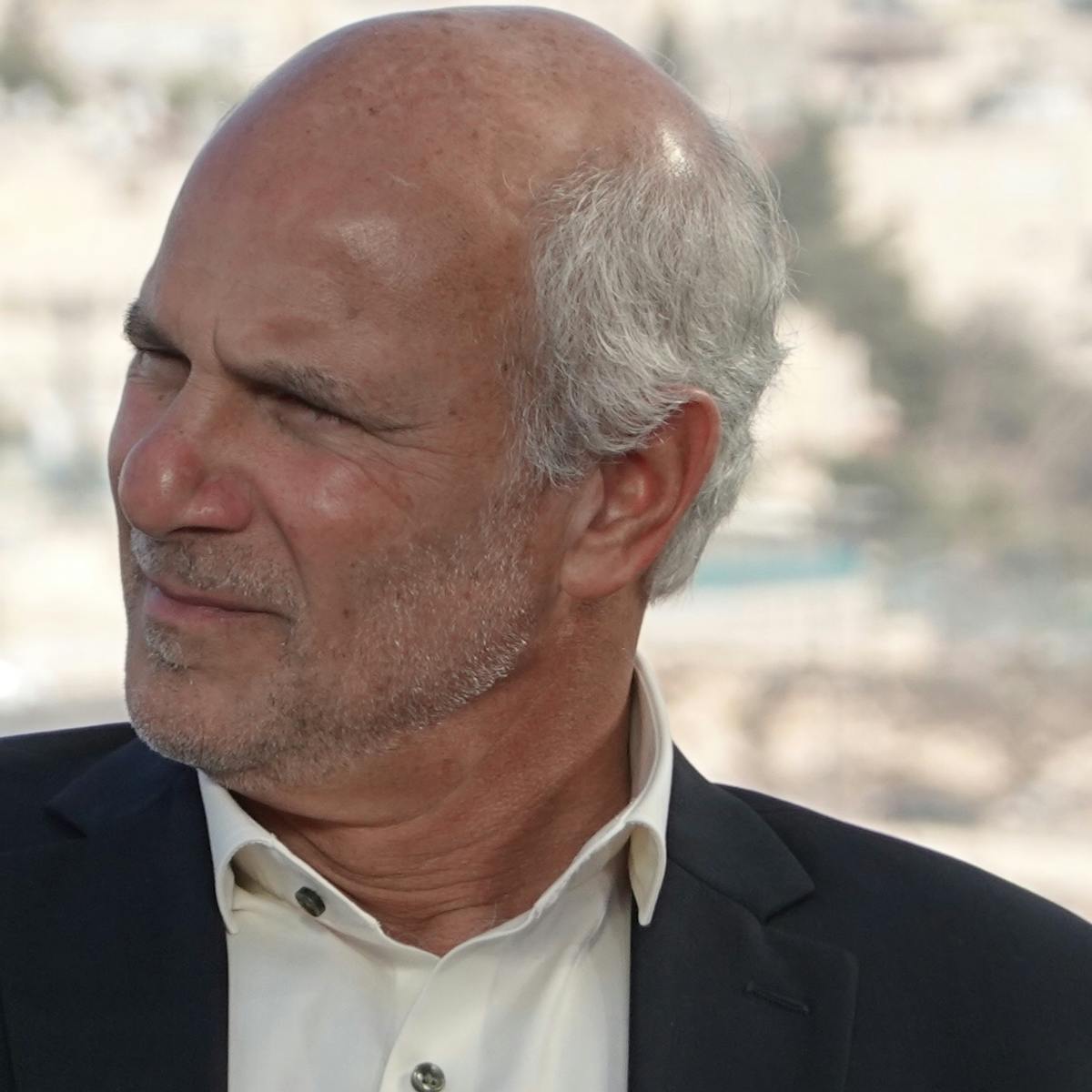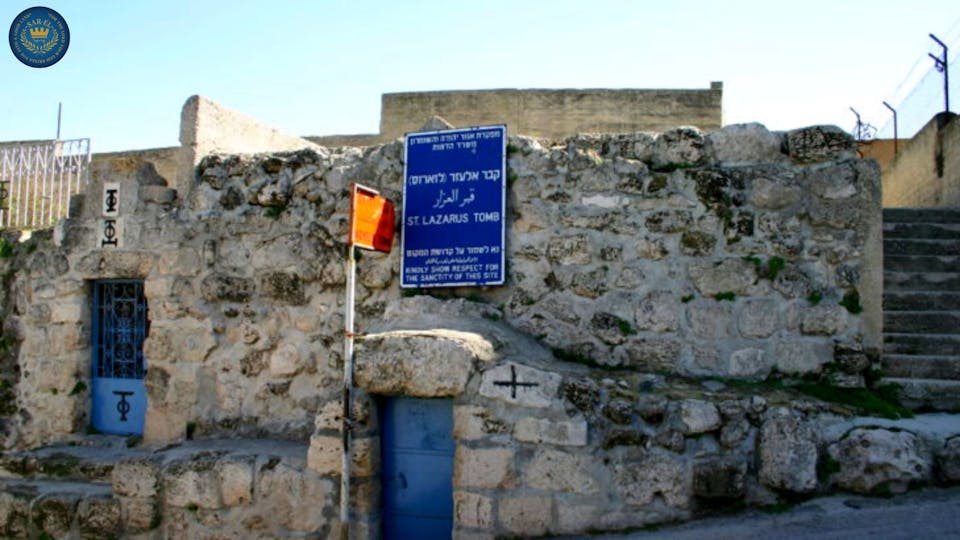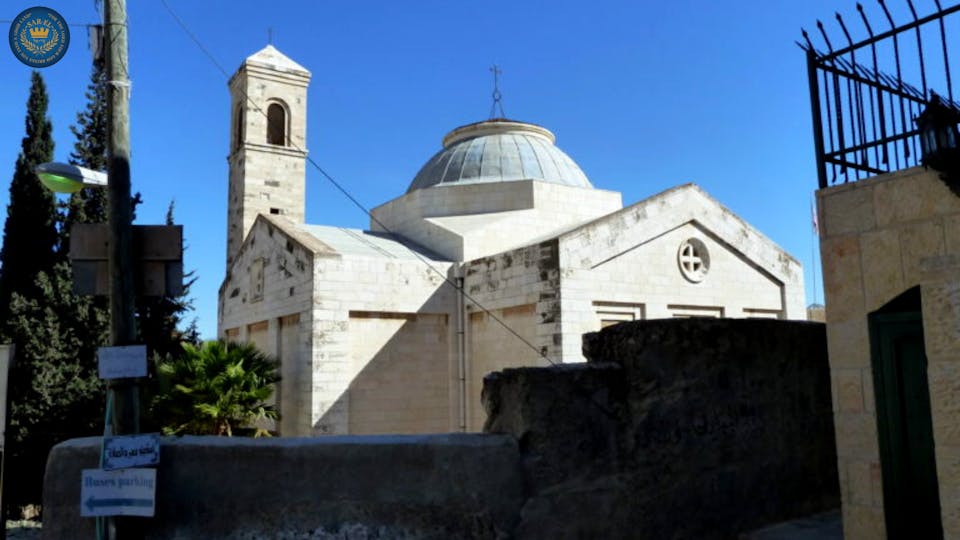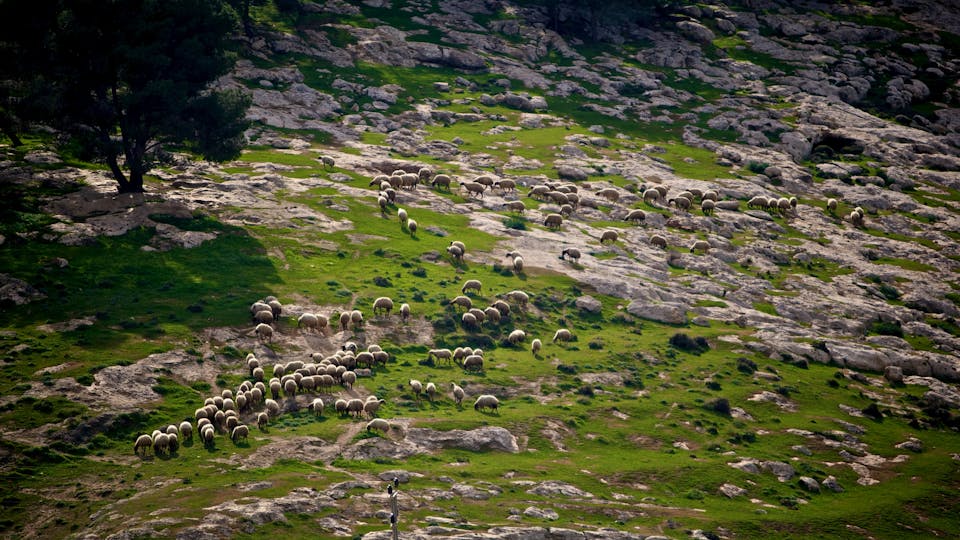Bethany- The Home of Lazarus, Mary & Martha

In Jesus’ time, much like today, Bethany was a suburb of Jerusalem located on the eastern slopes of the Mount of Olives. It was a small town on the edge of the Judean desert where some of Jesus’ closest friends lived, including Martha, Mary, and their brother Lazarus. Scripture tells us that Jesus visited Bethany often as it was a convenient stop on His many travels to Jerusalem; a quiet and friendly village where He enjoyed friendship and hospitality during His otherwise demanding and often challenging schedule.
The New Testament Scriptures record about 35 miracles that Jesus performed, with scholars still debating about the exact number, since some of the Gospel accounts overlap and possibly repeat the same story more than once. In fact, John the Evangelist concluded his Gospel narrative telling us that “… there are also many other things that Jesus did, which if they were written one by one … even the world itself could not contain the books that would be written...” (John 21:25). Apparently, John is telling his readers that there were probably many more miracles, parables, and wonders that Jesus had performed which never entered the written records of His disciples.
According to the Bible, these miracles included countless physical healings, multiplication of foods, overriding natural laws, space and time travel, seeing into peoples’ hearts, and of course raising the dead. Of these “resurrection miracles,” the resurrection of Lazarus in Bethany is the most detailed one, and possibly the one most told.
Bethany’s Location and Name
The village of Bethany derived its original name from two Hebrew words, “Beth An’ya,” meaning the “Home of the Poor” in the Hebrew dialect. The small village, which was somewhat of a “bedroom community” for the much larger city of Jerusalem across the Kidron Valley to the west, was probably named after a poor-people’s colony found in its vicinity where the poor and needy of the region could find food and shelter.
Located a short distance from Jerusalem, on the eastern slopes of the Mount of Olives and overlooking the Judean wilderness towards the Dead-Sea, Bethany is mentioned numerous times in our Bible. It is important to note that this particular village of Bethany is different from the “Bethany Beyond the Jordan” which relates to a different location in the Jordan Valley not far from present-day Jericho, where John the Baptist baptized Jesus and many others who arrived to hear his message, repent of their sins, and be baptized by him in the Jordan River.
The Bethany that is on the Mount of Olives is found in the heart of a modern-day Arab village named “Al-Eizariya,” meaning “the Place of Lazarus” in the Arabic language. The traditional “Tomb of Lazarus'' in its center is located about 1.5 miles (2.4 km) east from Jerusalem.
So let’s take a deeper look into the biblical events that are associated with Bethany, the churches that commemorate them, and the modern-day significance of the village which is located in the area of East Jerusalem. We trust that this knowledge will help you prepare for your next visit to Israel with one of our Sar-El Tours’ pilgrim groups.

Biblical Events in Bethany
According to The Scriptures, Jesus (Yeshua in Hebrew) visited Bethany numerous times throughout His earthly activities as He often traveled from the Galilee to Jerusalem. It appears that Bethany was a favorite place for Him where He found rest and fellowship among trusted friends and disciples during His many journeys in and out of Jerusalem. As a biblical era major city, Jerusalem was a congested and crowded city with many narrow alleys, no effective sewage system, and lacked hygiene and fresh air. Spending overnights in the comfort and tranquility of rural Bethany, instead of in the crowded city, was a “no brainer” for anyone who could find friendly hospitality there; and the Bible tells us that Jesus did exactly that.
Lazarus’ Resurrection
The best known biblical event that occurred in Bethany is naturally the miracle of raising Lazarus from the dead as recorded in the Gospel of John chapter 11. You might remember that Lazarus was the brother of Mary and Martha, and that they provided a warm environment and loving hospitality for the Rabbi from Nazareth more than once.
The Gospel story tells us that Jesus delayed His arrival to Bethany even though He was already notified by the two sisters that Lazarus was sick and needed His help. In fact, Jesus was asked to arrive urgently to pray for their brother since his sickness was apparently severe. John described the progression of events in his Gospel, saying, “Now a man named Lazarus was sick. He was from Bethany, the village of Mary and her sister Martha. (This Mary, whose brother Lazarus now lay sick, was the same one who poured perfume on the Lord and wiped his feet with her hair). So the sisters sent word to Jesus, ‘Lord, the one you love is sick.’ When He heard this, Jesus said, ‘This sickness will not end in death. No, it is for God’s glory so that God’s Son may be glorified through it.’”
Giving His disciples (and us) a hint that this story is going to take an “unusual turn,” Jesus continued to be strategically late and arrived at his friends’ Bethany home four days after Lazarus had died and had been buried. This was definitely a heartbreak for the loving sisters who were hoping that Jesus would arrive in time to heal their brother, but apparently, the Rabbi had other plans.
Arriving at the village “too late” and finding the sisters in deep mourning together with the extended family and the community, John tells us that “Martha said to Jesus, ‘if you had been here, my brother would not have died. But I know that even now God will give you whatever you ask.’ Jesus said to her, ‘Your brother will rise again.’ Martha answered, ‘I know he will rise again in the resurrection at the last day.’’
Martha articulated her biblical faith and hope (as do all God fearing Jews) in the final resurrection of the dead. Jesus replied with the epic and unforgettable words, saying, “’I am the resurrection and the life. The one who believes in me will live, even though they die; and whoever lives by believing in me will never die.’”
The story continues to unfold dramatically as Jesus heads to Lazarus’ tomb. Having commanded the bystanders to roll away the large stone that covered the entrance of the burial cave, He lifted up His eyes to heaven and prayed, “Father, I thank you that you have heard me. I knew that you always hear me, but I said this for the benefit of the people standing here, that they may believe that you sent me.’ When he had said this, Jesus called in a loud voice, ‘Lazarus, come out!’ The dead man came out, his hands and feet wrapped with strips of linen, and a cloth around his face. Jesus said to them, ‘Take off the grave clothes and let him go.’”
The Bible tells us that this amazing miracle of raising a dead man who was already rotting in his grave behind the cover of a massive stone captured the attention of many who had heard about it. The resurrection also intensified the religious leaders’ fears and hostility toward Jesus. And while the Feast of Passover was around the corner, the very next chapter of John (chapter 12) records Rabbi Yeshua visiting Bethany again and dining with the “freshly resurrected” Lazarus during another one of His frequent visits.
Jesus’ Anointing
It was during this meal, as the Bible tells us, that “Mary took a pound of very costly oil of spikenard, anointed the feet of Jesus, and wiped His feet with her hair. And the house was filled with the fragrance of the oil.” Mary’s act of extravagant generosity drew some criticism, and John wrote that “… one of His disciples, Judas Iscariot … who would betray Him, said, ‘Why was this fragrant oil not sold for three hundred denarii and given to the poor?’ This he said, not that he cared for the poor, but because he was a thief, and had the money box; and he used to take what was put in it.” (John 12)
Sadly, darkness crept even into the inner circle of the 12 disciples, but it didn’t surprise Jesus. The Bible tells us that He said, “‘Let her alone; she has kept this for the day of My burial. For the poor you have with you always, but Me you do not have always.” And though other Gospel writers remembered the story as having occurred in a different home in Bethany, the moral of the story remains that which Jesus emphasized, saying, “… She has done what she could. She has come beforehand to anoint My body for burial. Assuredly, I say to you, wherever this gospel is preached in the whole world, what this woman has done will also be told as a memorial to her.’” (Mark 14).
The Triumphal Entry
It was from the village of Bethany that Jesus began His Triumphal Entry into Jerusalem which launched His final eventful days just before His crucifixion, burial, and resurrection. As the Gospel of Mark tells us in chapter 11, “Now when they drew near Jerusalem, to Bethphage and Bethany, at the Mount of Olives, He sent two of His disciples; and He said to them, ‘Go into the village opposite you; and as soon as you have entered it you will find a colt tied, on which no one has sat. Loose it and bring it…’” This was the “famous” colt that would carry the Messiah into the City of Jerusalem during His Triumphal Entry, in fulfillment of the Messianic prophecy of Zechariah 9:9.
This humble procession of simple disciples, children, a donkey, and curious bystanders brought Jesus into Jerusalem for His final visits at the Temple, His intense confrontations with the religious establishment, and eventually to face the full wrath of Rome leading Him to His Cross. This week of His passion, leading up to the Passover meal and to Jesus’ ultimate sacrifice, started at Bethany.
The Ascension
Following Jesus’ burial and resurrection, the Gospel testimony concludes with His ascension as He left earth and returned to His heavenly home in view of His amazed disciples. As it is written in the Gospel of Luke, chapter 24, after Jesus gave His followers His final instructions while meeting with them in Jerusalem, “… He led them out as far as Bethany, and He lifted up His hands and blessed them. Now it came to pass, while He blessed them, that He was parted from them and carried up into heaven. And they worshiped Him, and returned to Jerusalem with great joy, and were continually in the temple praising and blessing God.”
In fact, it is very much within the realm of possibility that the return of the Messiah, the “Second Coming” as many call it, will also be focused in the Bethany area. As it is written, “ … while they looked steadfastly toward heaven as He went up, behold, two men stood by them in white apparel, who also said, ‘Men of Galilee, why do you stand gazing up into heaven? This same Jesus, who was taken up from you into heaven, will so come in like manner as you saw Him go into heaven.’” (Acts 1:10-11). Many Bible scholars believe that if the Lord is to return in “like manner,” a similar way to His departure, it stands to reason that His return will occur in the same area from which He ascended. The answer to this riddle may be waiting for you in Bethany.

The Bethany Churches
St. Lazarus Catholic Church
This Roman Catholic Church is located next to the traditional site of the tomb of Lazarus and the home of Mary, Martha, and Lazarus. The Church is maintained by the Franciscan Custody of the Holy Land, and the modern church which was built after 1953 was dedicated to St. Lazarus and designed by the famous Italian architect Antonio Barluzzi.
The modern church building stands by the remnants of the earlier Byzantine and Crusader churches that occupied the site in previous centuries dating back to the 4th Century A.D. A portion of the original mosaic floor is still visible, as are other ancient mosaic depictions of Mary, Martha and Lazarus.
A short distance uphill and northwest of the church is the entrance to the traditional tomb of Lazarus. The church’s famous dome is incorporated into an octagonal drum overhead, hinting toward the image of a subterranean vault, a dark grave ... while the higher elements of the Church, crowning the dome with light, guide the worshipers to the promise of Resurrection Life.
Greek Orthodox Church
Not far from St. Lazarus Catholic Church you will find a Greek Orthodox Church which commemorates the events that took place at the house of Simon the Leper as recorded in the Gospel of Mark 14:3. Located a short distance to the west from Lazarus’ tomb, this Orthodox historic Church invites worshippers to worship the Lord in light of the fascinating story of the courageous and passionate woman who anointed Jesus’ head with a very expensive perfume. Questioned and rebuked by some of the disciples, Jesus defended her actions, telling them that she has anointed Him for His upcoming burial, and added, “Assuredly, I say to you, wherever this gospel is preached in the whole world, what this woman has done will also be told as a memorial to her.”

Access to Bethany
Though Bethany is located on the eastern slopes on the Mount of Olives less than two miles from downtown Jerusalem, visitors need to drive around Jerusalem in order to pass through the security checkpoint and arrive at Bethany from the East. The location of the historic Churches is safe and accessible, parking is available, and there are no security issues to be concerned about.
Weather at Bethany
Located on the eastern slopes on the Judean Mountain Range at roughly 2,000 feet above sea level, Bethany enjoys mild Middle Eastern mountain weather year round as it faces the warm vistas of the Judean wilderness to the East. With warm summers and beautiful spring and fall weather, the rainy season lasts from December to March, and even then the sun shines more often than it rains. Remember that you are visiting a religious site, so make sure that your garments, summer or winter, cover your knees and shoulders for modesty’s sake.
Enjoy Bethany, and contact your Sar-El Tours operator to start planning for your visit in the Holy Land.
